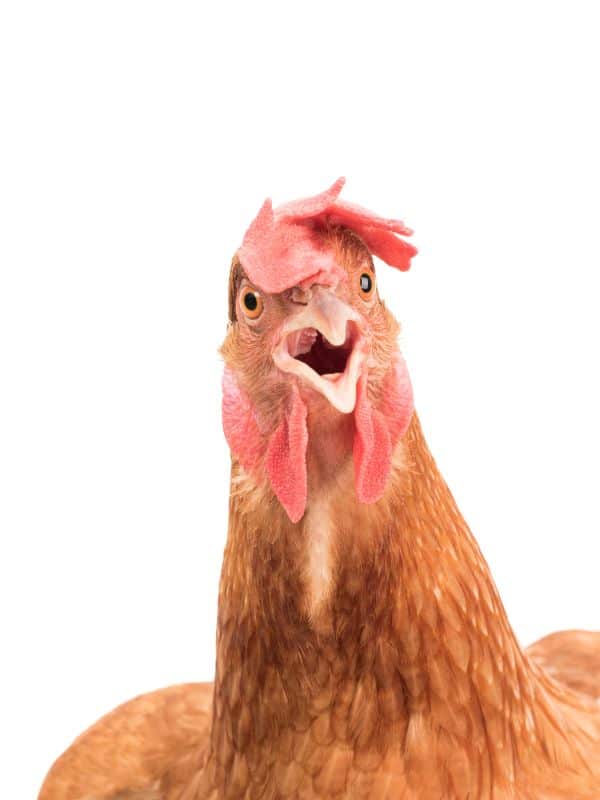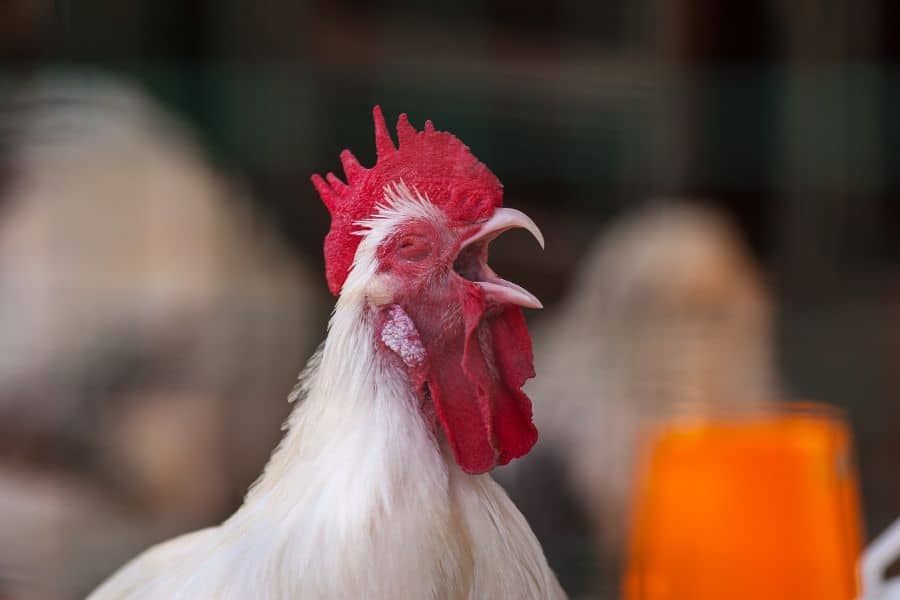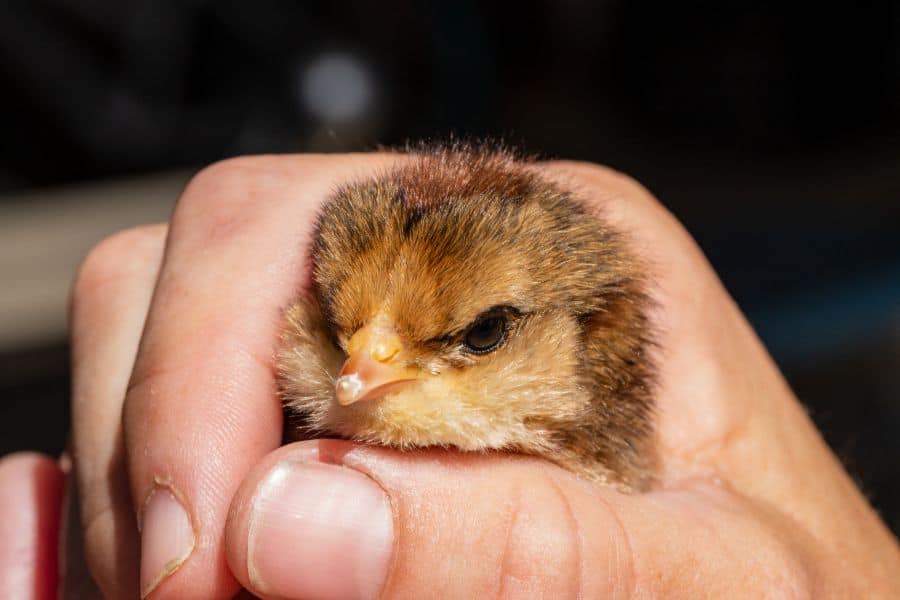Nature just doesn’t seem to stop amazing us. From the long giraffe necks to the web-spinning dexterity of spiders, there’s just too much about it that stirs up our curiosity and leaves us with a plethora of unanswered questions.
And now, when it comes to the avian category, and particularly the chickens, there remain lots of mysteries on how they go about their daily life, from how they produce the clucking sound to how they’re programmed to make the famous cock-a-doodle-doo serenades announcing the crack of dawn.
Today, we won’t examine any of that. Rather, we will dive into their dental anatomy and address one peculiar query that often draws the interest of many: Do chickens have teeth?
Read on to get the lowdowns on that!
“As Rarer As Hen’s Teeth”?…Here’s the Point
You might have heard the adage, “Rarer as hen’s teeth”, and probably wondered whether chickens actually have any teeth.
Well, to answer you — No, chickens don’t have teeth.
It’s that simple!
The old statement is used to liken the scarcity of something to that of chicken teeth simply because they’ve just never existed.
So, when you hear someone use that phrase, they simply mean whatever they are talking about is extremely rare to utterly nonexistent to find.
Why Don’t Chickens Have Teeth?
There are too many unresolved questions about nature, and no matter how hard we try to seek answers, nothing seems to provide a satisfactory justification for most of them, and chickens – and birds generally – lacking teeth is one of them.
Now, when we fail to get a scientific explanation about a phenomenon, whether because of inadequate research or being outwitted by nature, one thing we usually do as humans is come up with tales that try to cover up our defeat.
On that note, we’ve got several myths explaining why our feathered friends don’t have a dental formula like most other animals kept at home.
For one, the lack of teeth is believed to be an adaptation that helped them minimize the chances of exposure to predators back in the days before they found their way into our homes.
You see, chickens are closer to the bottom of the food chain, which means so many creatures are willing to turn them into a tasty meal anytime if not careful.
Lack of teeth meant they didn’t have to stand and chew their food — which could have been very dangerous in the cruel wild. Instead, they only needed to swallow and keep moving, as their internal anatomy took care of the rest.
The second myth is that possessing teeth would have prevented them from flying. Well, not sure how that was coined to only apply to birds and not bats, but as I said, these are just myths without any scientific reinforcement.
And if birds actually had to give their teeth in exchange for flying capabilities, it’s apparent that as eagles and the grey-headed Albatross were securing the best deal, our adorable backyard friends were busy buying a pig in a poke and ended up scammed.
How Chickens “Chew” Their Food
Since chickens don’t have teeth, you might wonder, ” Just how do they chew their food?”
When a chicken spots a favorite snack, they begin by pecking at it and banging it against the ground to break it down into smaller morsels that can easily fit into their tiny beaks.
Now, once a chicken picks up a small edible piece, the tongue helps push the morsel to the back of the mouth, sending it to the bird’s esophagus, which helps slide it into a small porch-like structure called the crop.
This crop temporarily stores anything the chicken swallows before it is released to the bird’s actual stomach. At the crop, food is mixed with water, good bacteria, and lactic acid before being pushed into the proventriculus, the bird’s actual stomach.
Once the food enters the proventriculus, it’s mixed with acids and digestive enzymes like pepsin. It’s then sent to the ventriculus, commonly called the gizzard, where the “chewing” occurs in chickens.
You see, the gizzard is a strong muscle that uses grit to grind large food particles into smaller ones that can easily pass through the chicken’s small intestines. Grit typically comprises sand, stones, oyster shells, granite, and other coarse particles picked up by the chicken when foraging.
As the gizzard contracts and churns, it rubs the food against these elements, breaking it down into smaller pieces (now what we call “chewing”) that can effortlessly pass through the small intestines and eventually out of the digestive tract through the vent.
Your Flock Needs Grit
It may sound a bit awkward, but your chicken actually needs to ingest grit from time to time. As the gizzard rubs food against grit using muscular movements, the small pebbles gradually break down into even smaller sizes that move into the small intestines together with chewed food.
As such, it’s necessary to maintain a healthy load of grit in your chicken’s system to ensure they have enough of it to “chew” food. Usually, a free-ranging flock will constantly do the replenishment while foraging, so you don’t necessarily have to provide it to them.
However, if for any reason you keep your flock put, get commercial grit for them. It’s available at farm supplies and online.
Once you have it, strategically position it in a place where they can easily access it. It will help them keep their supply of grit in the gizzard within healthy levels so they don’t suffer from serious conditions, for instance, sour crop.
About the intake quantity, you don’t have to worry about your feathered friends ingesting too much of it. That’s because chickens are hardwired to eat just as much or as little as they need, meaning you never have to occasionally remove the bowl to keep them from overfeeding.
Read More:
FAQS
Are There Chickens with Teeth?
No, we don’t have any chicken species that have teeth. They all rely on the gizzard to break down the food they ingest.
Do Baby Chickens Have a Tooth?
Not exactly. However, a newly-hatched chick has a tiny horn-shaped attachment at the upper beak to help them break out of the eggshell. But this “egg tooth” immediately falls off once the baby chicken is hatched.
Do Chickens Have Tongues?
Yes, chickens have tongues that have a similar structure as those of quails, peacocks, turkeys, pheasants, and other members of the galliform family to help them push food to the back of the mouth for swallowing.
However, these tongues look much different from the tongues of other animals.
Read More: Can Chickens Swim?
Conclusion
Unlike most animals, chickens don’t have teeth, and there are a couple of myths surrounding this lack. Chickens, however, have a gizzard — a muscular organ that is the avian equivalent of teeth.
But unlike teeth that break food down by mastication, gizzard works by rubbing food against grit, resulting in smaller food particles that easily pass through the small intestines.
That’s to say, even though chickens don’t have actual teeth, they have an organ that does the “chewing” just as well, so the lack of teeth doesn’t affect their quality of life or eating habits in any way.



